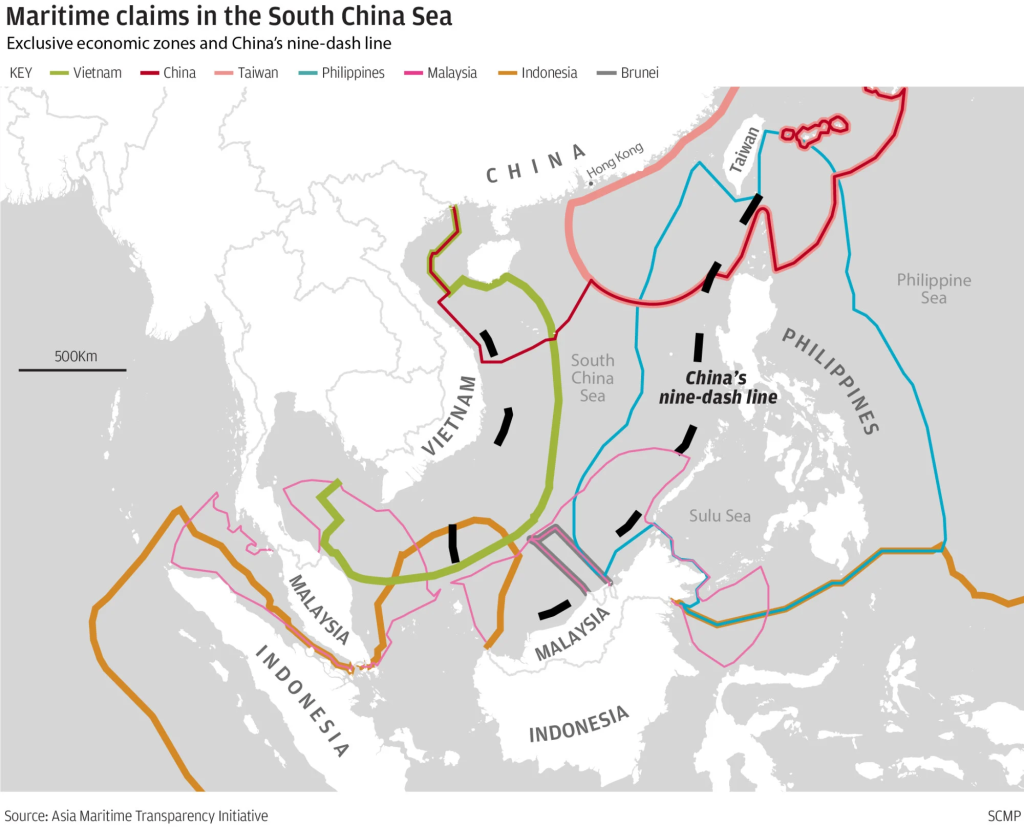As the United States fortifies its alliances with the Quad and Aukus to curb China’s ambitions in the South China Sea, Russia’s military treaty with North Korea has complicated Washington’s Indo-Pacific strategy.
This agreement, which could be perceived as a means for Russia to bolster its defence procurement from North Korea for its invasion of Ukraine, has in fact positioned Russia as a formidable player in the South China Sea and the Taiwan Strait.
Despite the absence of a formal tripartite agreement between China, North Korea and Russia, Pyongyang’s individual defence pacts with Beijing and Moscow could indicate future defence coordination and cooperation.
Former defence minister Sergei Shoigu proposed during a visit to Pyongyang that they hold joint naval drills with China. This desire is endowed in the converging interests to convey to the US and its allies that they can also achieve the same level of cooperation as the North Atlantic Treaty Organisation (Nato) in the Indo-Pacific region and cause major disruption.
Last year, China and Russia held joint drills called Northern/Interaction-2023, in which the two countries actively patrolled and conducted exercises in the South and the East China Seas and the Aleutian Islands near Alaska. In January, Russia conducted anti-submarine drills in the South China Sea, during which it detected and neutralised a mock enemy submarine.
Russia is slowly increasing its presence in the east as it has been modernising its fleet with the commissioning of eight new warships, four nuclear-powered submarines and conventional submarines, all between 2022 and October 2023. During this same period, Russia’s Pacific Fleet staged eight strategic-level naval exercises.

In the event of a conflict between the US and China, North Korea’s pact with Beijing could place US bases in Japan and South Korea directly in the cross hairs. This potential flashpoint, coupled with the prospect of US and allied retaliation against North Korea, could compel Russia to honour its own agreements with Pyongyang, setting the stage for a perilous escalation.
The human toll in South Korea alone could be catastrophic. A 2016 South Korean defence white paper estimated that the US would need to deploy 690,000 troops to South Korea. These numbers dwarf the levels of peak US troop deployments in Afghanistan (98,000) and Iraq (170,000). Expected casualties in the event of a North Korean attack are also estimated in South Korea to be 100,000 within 48 hours if greater Seoul is targeted and 200,000-300,000 South Korean and US casualties within the first 90 days.
This does not consider the casualties US forces and American allies could incur in the South China Sea, which would likely see the bulk of the action. Such developments would necessitate a multilayered response, enhancing coordination and intelligence sharing among China, Russia and North Korea and further complicating the regional landscape for US operations.





